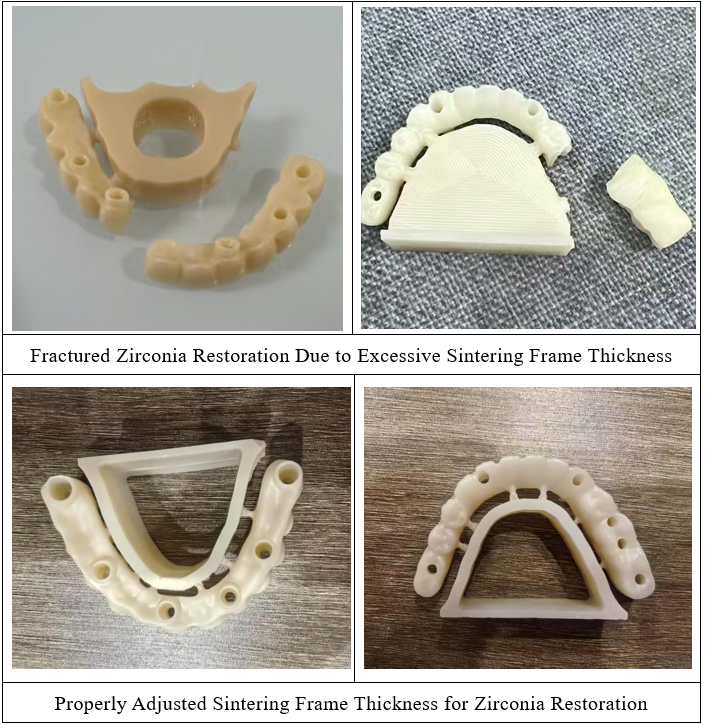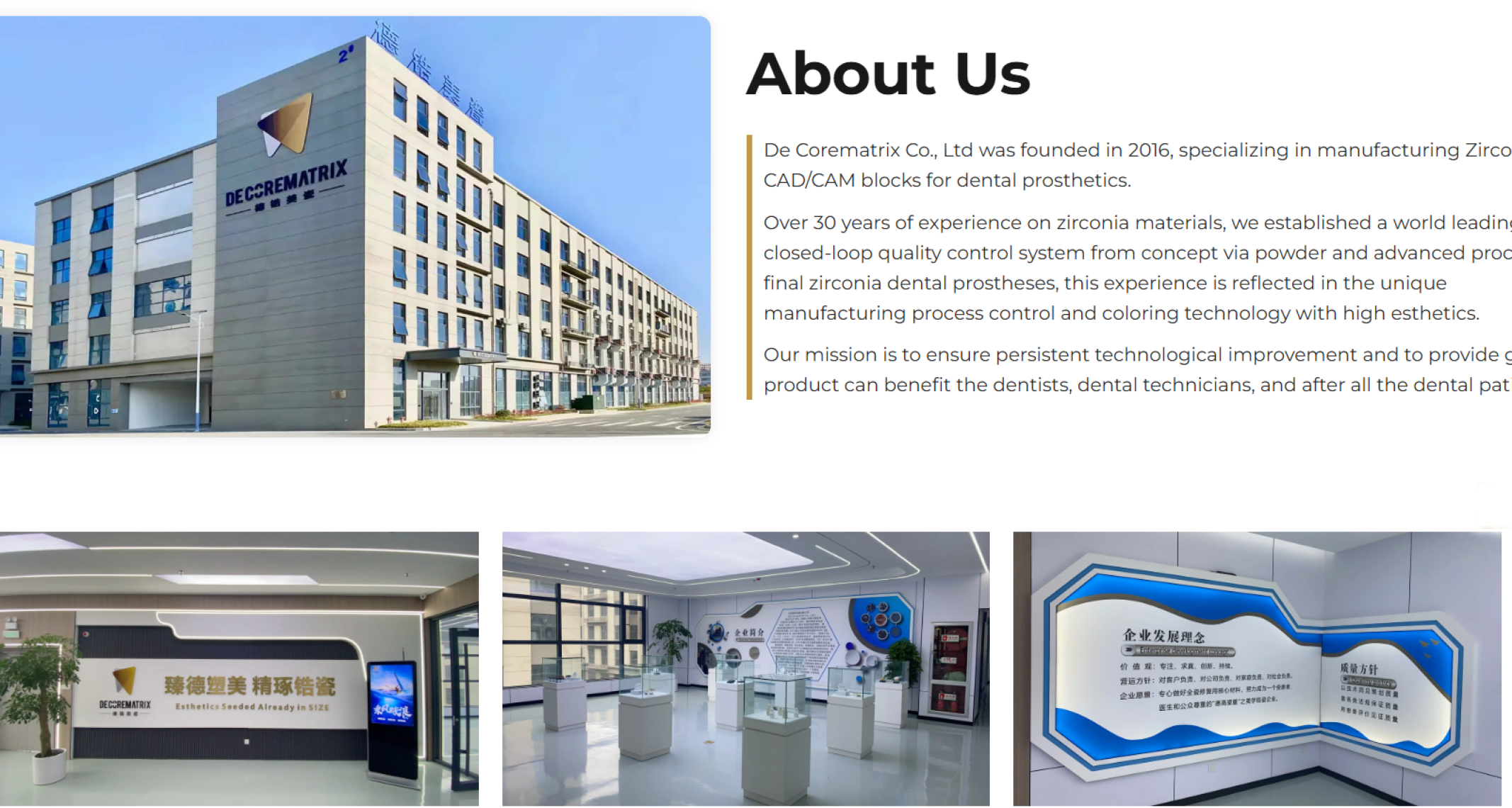Home/New/Preventing Fractures in Zirconia All-Ceramic Prostheses: Pre-Sintering Insights and Solutions
Zirconia all-ceramic prostheses are increasingly favored by dentists and patients due to their aesthetic translucence, excellent biocompatibility, and high flexural strength. However, compared to metal-ceramic crowns, the brittle nature of zirconia makes it more susceptible to fractures if mishandled during fabrication—including CAD/CAM processing, sintering, and porcelain firing. This article examines the causes of pre-sintering fractures in zirconia all-ceramic prostheses.
1、Design Specifications
The morphological design of zirconia all-ceramic prostheses is a critical step in the fabrication process. Fractures in zirconia restorations primarily occur due to improper structural design. Key design principles include:
(1) The design must adhere to minimum thickness requirements, particularly at the cervical margin of the zirconia restoration, which should be no less than 0.6 mm.
(2) The anterior connector must have a minimum cross-sectional area of 9 mm², while the posterior connector should be at least 12 mm².
(3) The bridge span between two abutment teeth should not exceed two consecutive missing units.
(4) The edentulous span length must not exceed 20 mm.
(5) Zirconia prostheses can be used for bridges of up to 14 units, but free-end designs are not recommended.
(6) For implant-supported bridges, the screw access channel should avoid peripheral placement and ideally be positioned near the occlusal center.
2、Layout Parameters
Improper layout design may lead to fractures during fabrication. Key aspects require attention:
(1) Minimize undercuts during the design layout phase. The design angle should be adjusted to reduce undercuts in the restoration, decreasing the need for excessive grinding in later stages and thus lowering the risk of microcracks.
(2) Optimize sintering frame thickness through proper design. The sintering frame should not be excessively thick, as greater thickness generates higher shrinkage stress during sintering, increasing fracture risks. The recommended thickness should match the connector diameter (approximately 2.0–2.5 mm). Below are two clinical cases demonstrating fractures in full-arch sintering frames:

3、Connector Placement
(1) Connectors should maintain a horizontal orientation to ensure uniform stress distribution during zirconia sintering. Avoid aligning connectors with the dental arch curvature to prevent stress concentration and potential fractures.
(2) Connectors must be positioned perpendicular to the buccal or labial surfaces of the prosthesis to achieve balanced force distribution during milling.
(3) Connectors should be placed on the prosthesis’s most prominent surfaces.
(4) The minimum number of connectors follows the n+2 rule (where n represents the number of prosthetic units). For instance, a single crown requires at least three connectors spaced 120° apart to ensure stable fixation during machining and prevent vibration-induced fractures.
4、Machining Equipment
(1) Zirconia Block Installation Checks: Before replacing the zirconia disc during prosthesis fabrication, thoroughly clean all debris from the fixture. Residual dust may compromise clamping integrity, potentially causing vibration and fractures during milling. When installing zirconia blocks, tighten all fixture screws simultaneously to ensure uniform clamping force and prevent prosthesis fractures.
(2) Routine Milling Equipment Maintenance: Maintain regular milling machine calibration. Extended periods without calibration may produce restoration scratches that could initiate microcracks. Perform daily dust removal immediately after machining operations. Delayed cleaning may allow dust accumulation in the spindle and other components, reducing cutting precision.
(3) Bur Replacement Protocol: Replace milling burs at recommended intervals. Worn burs significantly increase the risk of prosthesis chipping or microcrack formation.
This article summarizes the common fracture issues found in zirconia dental prostheses and the techniques used to prevent them. Other anomalies may still arise during production. For technical support or detailed discussions, please feel free to contact us. DeCoreMatrix—your reliable zirconia expert!

